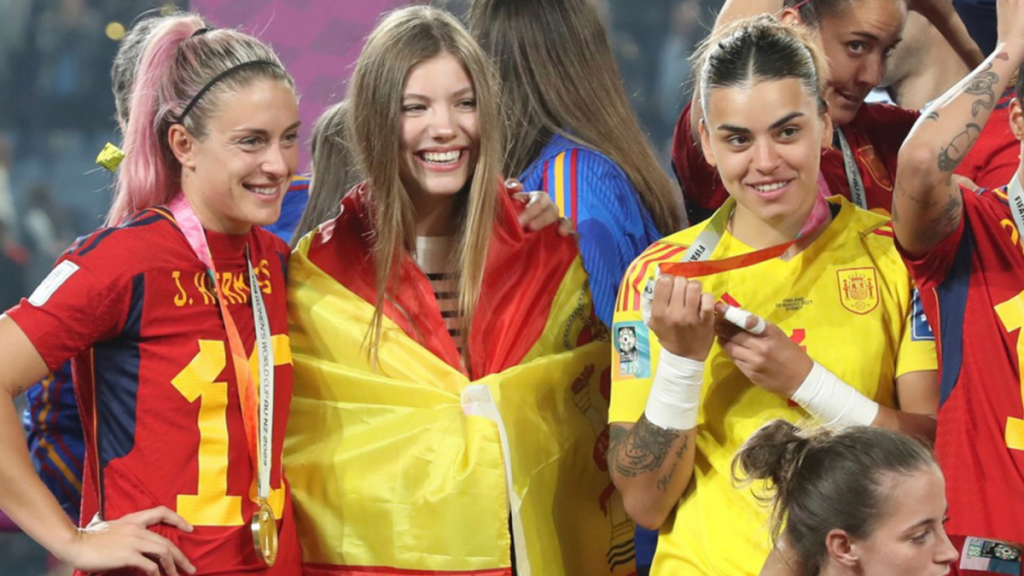In a significant move for women’s sports, FIFA has announced the expansion of the Women’s World Cup from 32 to 48 teams beginning in 2031. This decision, reached unanimously by the FIFA Council, aligns the women’s tournament with the men’s World Cup, which is also expanding to 48 teams for its 2026 edition. The shift aims to broaden representation and enhance the overall competitiveness of women’s football globally.
| Article Subheadings |
|---|
| 1) Overview of Expansion Plans |
| 2) Timing and Format Changes |
| 3) Previous Tournament Successes |
| 4) Addressing Discrimination through Revised Policies |
| 5) Future Outlook and Implications |
Overview of Expansion Plans
FIFA’s decision to expand the Women’s World Cup reflects the growing momentum and investment in women’s football worldwide. After extensive consultations with various stakeholders, the FIFA Council unanimously agreed that the remarkable progression in women’s football warranted an increase in the number of participating teams.
“The FIFA Women’s World Cup will expand from 32 to 48 teams as of the 2031 edition,”
FIFA stated in an official announcement. This expansion is expected to not only showcase emerging talent but also foster a more competitive environment.
Timing and Format Changes
The next edition of the Women’s World Cup will adopt a new structure, moving from 32 teams to 48. Following this change, the tournament will feature a 12-group format, increasing the total number of matches from 64 to a staggering 104. This adjustment is aimed at extending tournament duration by one week, allowing for a more engaging experience for fans and participants alike. The hosting requirements for both the 2031 and 2035 editions of the tournament have also been redefined to accommodate this new format, ensuring quality facilities and audiences for the expanded event.
Previous Tournament Successes
The expansion comes on the heels of the successful 2023 Women’s World Cup, which marked a pivotal change by moving from 24 to 32 teams. This change contributed significantly to the tournament’s success and visibility, particularly as Spain triumphed to claim their first Women’s World Cup title. The upcoming tournament in 2027, hosted by Brazil, will see 32 teams compete. However, there are high expectations for the United States women’s national team, led by coach Emma Hayes, to perform strongly after their disappointing exit in the 2023 tournament.
Addressing Discrimination through Revised Policies
In addition to the expansion news, FIFA has also revised its disciplinary codes to combat racism and discrimination within the sport. This overhaul features an array of new measures aimed at counteracting discriminatory behaviors in both on- and off-pitch situations. Stronger sanctions and increases in fines have been implemented, alongside the potential forfeiture of matches. The updated regulations also incorporate a three-step process to address anti-LGBTQ chants during matches, now extended to include racist behavior. FIFA President Gianni Infantino expressed the importance of collaboration with the 211 FIFA member associations to enhance the regulatory framework regarding discrimination.
Future Outlook and Implications
The reach and impact of the Women’s World Cup expansion is expected to be profound. It not only sets a precedent for future tournaments but also accelerates investment in women’s football around the globe. As more nations gain entry into elite levels of competition, the visibility of the women’s game will increase significantly. Moreover, the commitment to combat racism and discrimination within the sport reinforces FIFA’s broader strategy for inclusivity. The changes sanctioned by FIFA signal a progressive approach for the future of women’s football, promising to elevate the sport to new heights.
| No. | Key Points |
|---|---|
| 1 | The Women’s World Cup will expand from 32 to 48 teams starting in 2031. |
| 2 | The new format includes a 12-group structure, increasing the number of matches to 104. |
| 3 | The expansion aims to enhance competition and representation in women’s football. |
| 4 | FIFA has revised its disciplinary code to address racism and other forms of discrimination. |
| 5 | The upcoming tournaments are expected to boost investment and visibility in women’s football. |
Summary
The decision to expand the Women’s World Cup to 48 teams by 2031 marks a historic progression in women’s sports, promising broader representation and increased competition. The accompanying revisions to disciplinary codes demonstrate FIFA’s commitment to combating discrimination, paving the way for a more inclusive future in football. As nations prepare for this monumental change, the implications for women’s football are set to reshape the landscape of the sport for years to come.
Frequently Asked Questions
Question: Why is the Women’s World Cup expanding to 48 teams?
The expansion is aimed at enhancing competition, offering broader representation, and responding to the growing interest and investment in women’s football globally.
Question: What format will the expanded Women’s World Cup adopt?
The tournament will adopt a 12-group format, resulting in a total of 104 matches, an increase from the previous 64 matches.
Question: How does FIFA plan to address racism in football?
FIFA has revised its disciplinary code to include stronger sanctions for racist behavior and has implemented measures to ensure a safe sporting environment for all participants.
